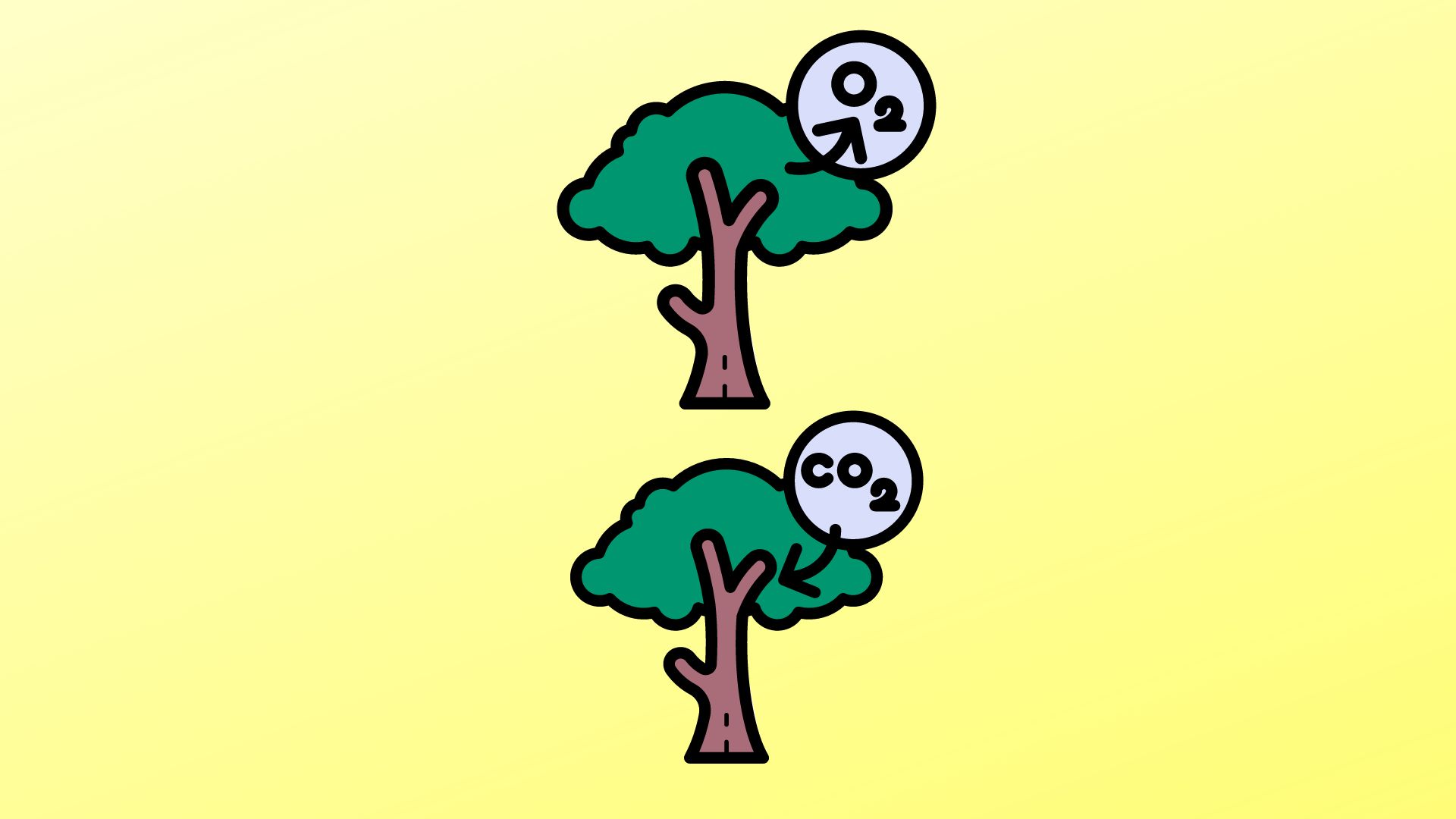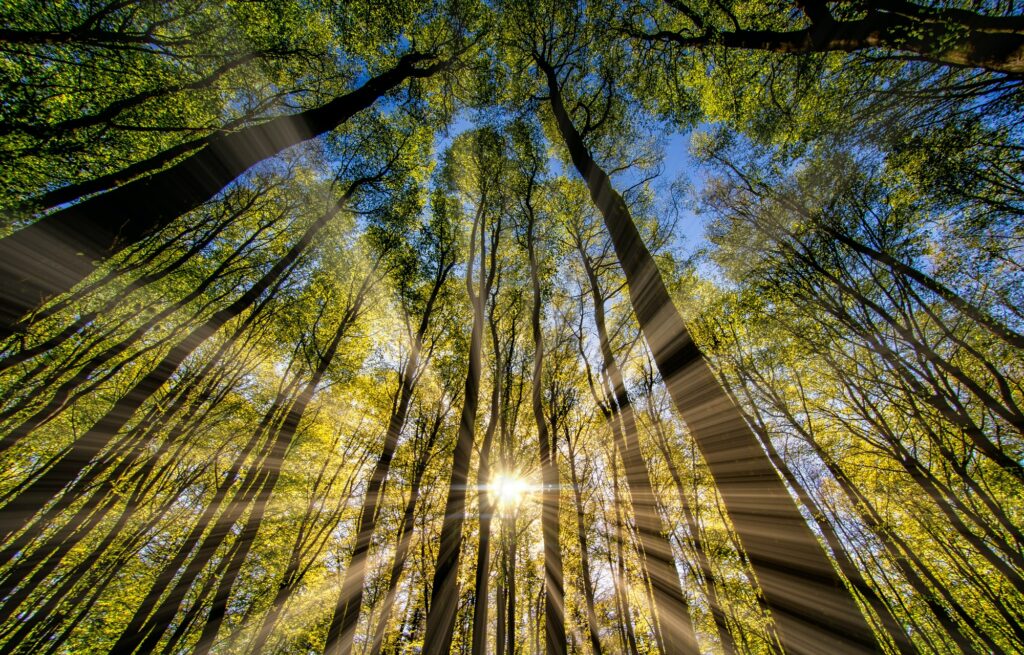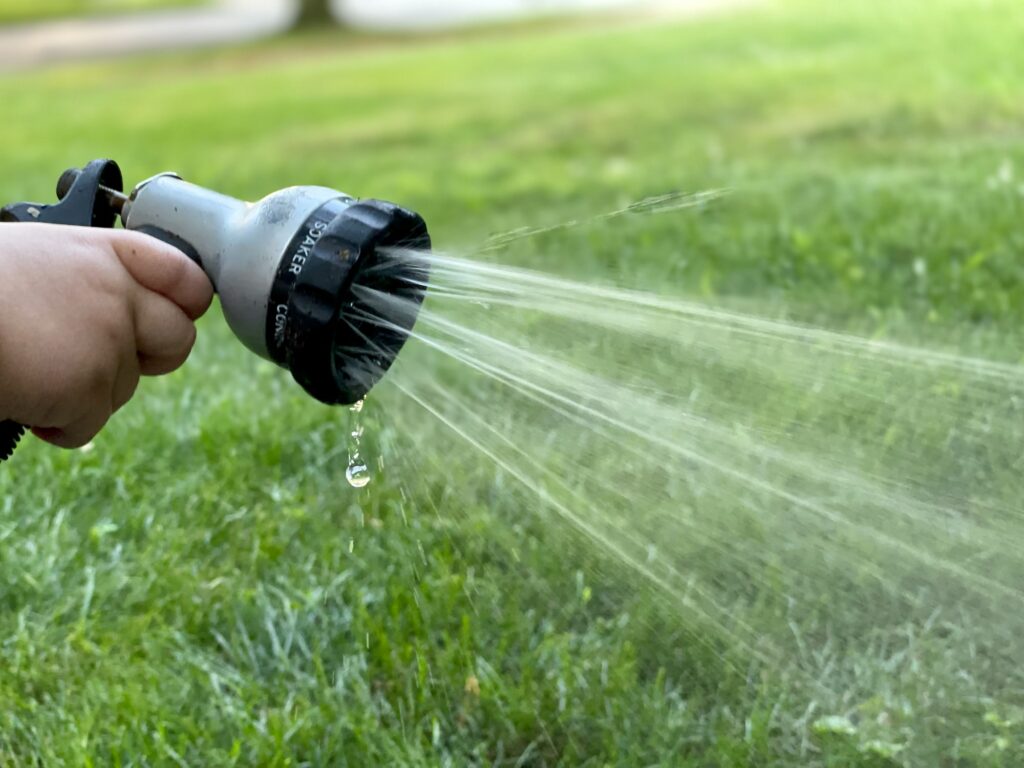
To decide how to care for a tree, it’s important to understand how a tree works. Photosynthesis is the process a tree uses to make energy to grow. There are many factors that affect photosynthesis. Realizing these factors will help you treat sick trees. Or, it can help you decide which trees to plant.
There are 4 major factors that influence photosynthesis; sunlight, temperature, water, and nutrients. The amount of sunlight and the temperature need to be right. Too little or too much of each will cause issues. Without enough water or nutrients, a tree won’t have everything it needs to photosynthesise.
In this article, I will describe the different factors that affect photosynthesis. Once broken down, you may find it’s much simpler than you originally thought.

Factor One: Sunlight
Sunlight in an essential ingredient to photosynthesis. Without sunlight, there is no photosynthesis. For this reason, light is one of the most important factors in photosynthesis.
For the record, it’s actually the solar radiation that drives photosynthesis. Sunlight is electromagnetic radiation with a variety of different colors and wavelengths. Each wavelength carries a different amount of energy.
We measure solar radiation in nanometres (nm). One nm is equal to one billionth of a meter. The ideal levels of solar radiation for photosynthesis are between 400 and 700nm in wavelength.
With light and photosynthesis, two problems can arise. These are:
- Too much light
- Too little light
Each of these problems will affect photosynthesis in different ways.
Different tree species favour different light conditions. So, a species that has adapted to shady conditions will not do well when given full sun. Likewise, a tree that needs full sun will not cope if planted in a shady area. Knowing your species is the first step in identifying lighting issues in trees.
Overall, deciduous trees handle changes to light intensity better than evergreen trees. The reason for this is due to leaf loss. When deciduous trees lose their leaves, the fresh growth will have a better chance of adapting to changes in the environment. If needed, the new growth can change its structure.
Too Much Sunlight
As the famous saying goes, “Too much of a good thing can be a bad thing”. Sunlight is no exception. Photosynthesis will increase with more light. However, there comes a point where photosynthesis will stop, no matter how much light there is. This is called the light saturation point.
When the light saturation point is reached, problems will occur. One of these problems is photoinhibition.
Photoinhibition is defined as the decrease in photochemical efficiency experienced in response to intense illumination due to radiation damages. Encyclopedia of Biological Chemistry (Second Edition), 2013
In short, photoinhibition is when photosynthesis rates drop because a tree receives too much sunlight. Different species will have different tolerances with photoinhibition.
Another problem associated with too much sunlight is the creation of harmful compounds. If the tree doesn’t get rid of these compounds, it will lead to damage of the photosynthetic anatomy.
There are different ways a tree can receive too much sunlight. Here are a few:
- A shade-tolerant tree is planted in full sun
- A building or tree providing shade a tree is removed
- Crown reduction, exposing the inner shade-tolerant leaves
Shade-Tolerant Tree Planted In Full Sun
Planting the right tree in the right location is important to a tree’s longevity. I live in Australia, so the sun can get quite vicious here. I’ve seen the effect full sun can have on a shade-tolerant species.
A Building or Tree Providing Shade To a Tree Is Removed
A tree growing under the shade of a tree or building will have adapted to those conditions. However, if that shade is removed, the tree will struggle. There will be too much sun and the tree won’t have time to adapt.
Crown Reduction, Exposing Inner Shade-Tolerant Leaves
There are two types of leaves; shade leaves and sun leaves. In big tree canopies, the outer leaves will receive most of the sun. The inner leaves of the tree canopy won’t get as much sun as the outer leaves, so these leaves become shade-tolerant.
Trees will build sun leaves and shade leaves differently. Sun leaves have adapted to thrive in full sun, whereas shade leaves have adapted to thrive in shade conditions. If you remove too much of the outer canopy, the shade leaves will receive too much sun.
Too Little Sunlight
Too little light can also cause problems with photosynthesis. Again, some species can adapt to these conditions, whilst others can’t. The species and leaves that can adapt have a unique structure. This structure allows the leaves to be more efficient and photosynthesising, meaning they can get by with little light.
Trees need some sunlight to survive. Without sunlight, trees won’t be able to turn carbon dioxide and water into energy. Without the energy to grow and heal, a tree will die.
Too little light can be a little easier to diagnose. Most people understand photosynthesis on a basic level, so looking to see if a tree has adequate lighting may be the first thing they think of.
Factor Two: Temperature
Temperature affects photosynthesis. If it’s too hot, or too cold, photosynthesis rates will drop. Again, different species will have different tolerances.
Temperature and photosynthesis is a very complex subjects. The temperature will vary throughout the day, throughout seasons, and even throughout a canopy. Whether a tree is in a forest or urban environment, there are many factors that can determine the temperature.
In general, though, photosynthesis is at its highest around 77F. Once temperatures start to get higher, the photosynthetic rates will drop. The reason photosynthetic rates drop has to do with respiration.
During respiration glucose and oxygen, react to make carbon dioxide and water, releasing energy. As temperatures rise, the respiration rates rise. At around 104F, trees use more carbon in respiration than they gain in photosynthesis.
At these high temperatures, damaging compounds are also released, hurting the tree.
Lower temperatures affect the rate of photosynthesis, too. This is mainly because of energy being stuck in the leaves.
In colder temperatures, leaves find it harder to get rid of excess light energy. Just like earlier, a tree that has too much light energy is at risk of photoinhibition.
On colder days, leaves can also find it difficult to move the sugars from the leaf to the rest of the tree. When the leaf can’t move the sugar on, it will cause a buildup, preventing any further photosynthesis. Think of it like a warehouse that is full. The warehouse won’t be able to receive any more stock until it releases some.
As mentioned, different trees will have different tolerances to temperature. So, when selecting trees for planting, do some research into their natural habitat, including temperature ranges.
Likewise, if you are diagnosing tree issues, learn the ideal temperature range of that tree. If the tree isn’t endemic to the area, it could struggle to photosynthesise in the current temperatures.

Factor Three: Water
Water is another key ingredient in photosynthesis. So, it’s only natural that without water a tree cannot photosynthesise. But, it’s not that straightforward.
Another key ingredient for photosynthesis is carbon dioxide. A tree will absorb carbon dioxide through the stomata, on the underside of its leaves. The stomata are tiny holes that allow the tree to absorb carbon dioxide. The stomata will also release oxygen and water vapour.
When times are tough, and a tree is low on water, it will close the stomata. Closing the stomata will prevent the tree from losing any more water through evaporation. It’s a handy trick to save water in stressful conditions.
Unfortunately, closing the stomata isn’t always a good thing. Water won’t be able to escape the tree, but carbon dioxide won’t be able to get in. Without adequate levels of carbon dioxide, photosynthetic levels will drop.
The longer the stomata stay closed, the harder it is for the tree to recover. In drought conditions, the tree may never recover. So, if caring for a tree, it’s important to assess the soil’s moisture levels.
Factor Four: Nutrients
Trees need adequate nutrition if they are to have all the tools necessary to photosynthesise. Different nutrients contribute to the formation of different parts of a tree.
For example, iron. Iron is a major contributor to the formation of chlorophyll. Chlorophyll is where sunlight is absorbed. A tree with an iron deficiency will have yellow leaves that struggle to absorb sunlight. So, an iron-deficient tree cannot photosynthesise at the same rate as a healthy tree. Eventually, if the iron levels aren’t restored, the tree can no longer photosynthesise resulting in its death.
There are 14 essential nutrients needed for a tree to live. Each nutrient will contribute in different ways to a tree’s survival. Some directly influence photosynthetic ability. Overall, though, if one of these nutrients is missing, the tree will die.
The table below lists all the essential nutrients.
| Nitrogen | Potassium |
| Calcium | Magnesium |
| Phosphorous | Sulfur |
| Chlorine | Boron |
| Iron | Manganese |
| Zinc | Copper |
| Nickel | Molybdenum |
